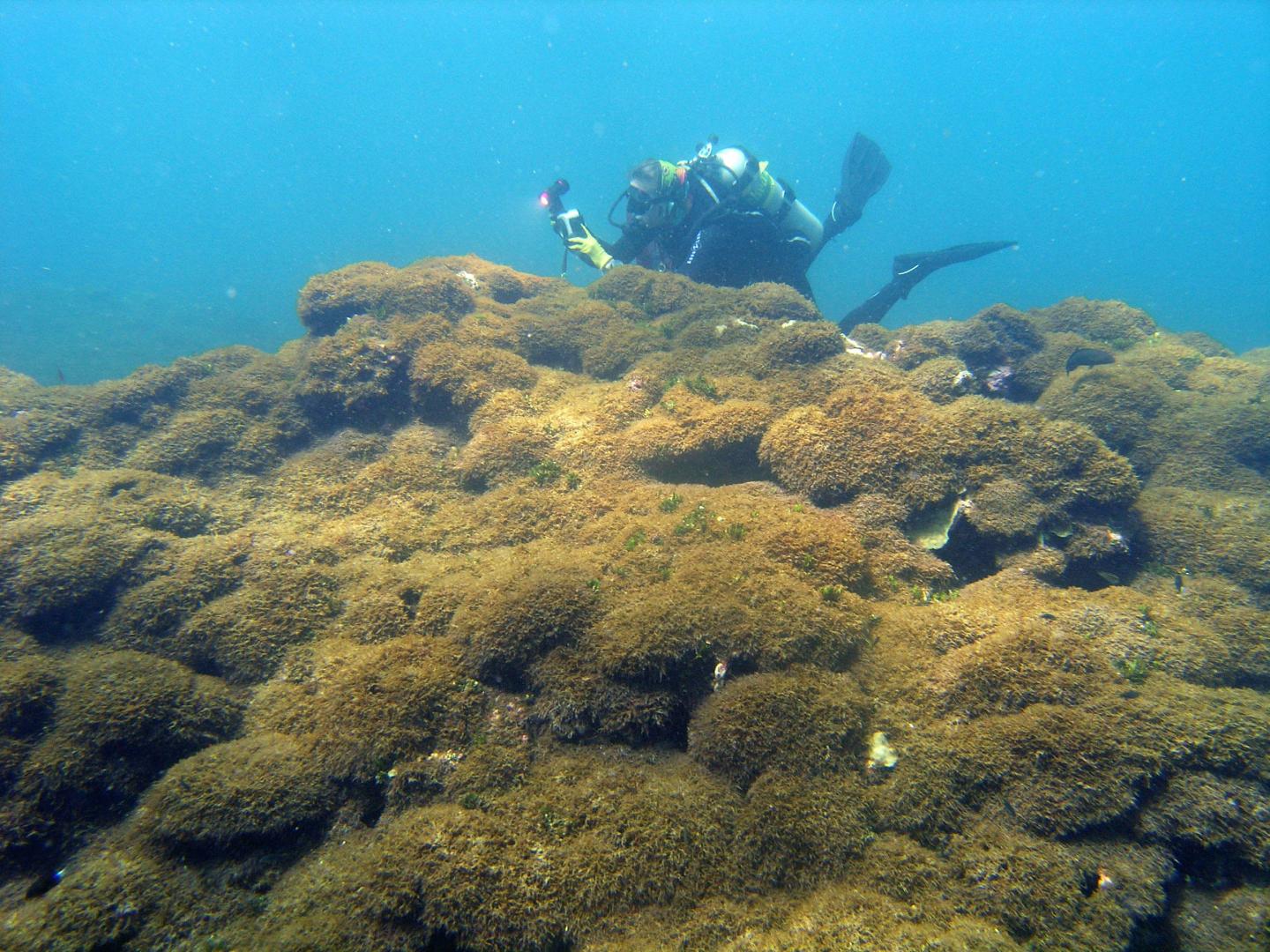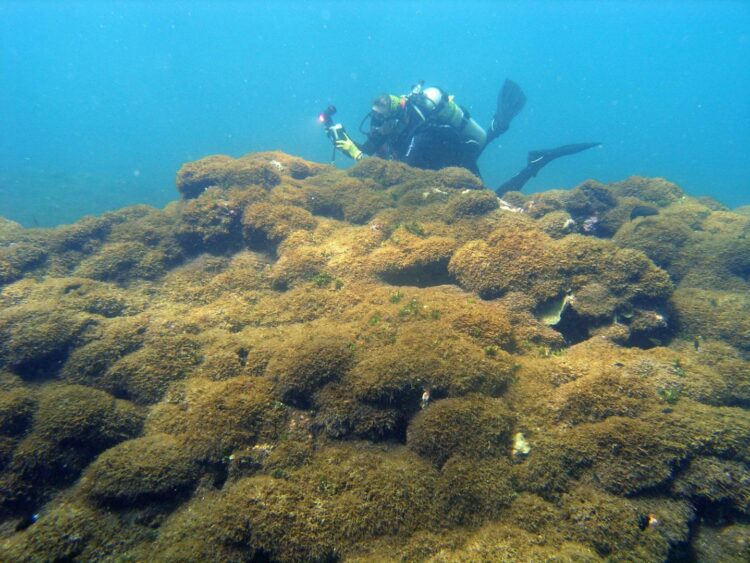
Credit: Photo courtesy: NOAA/National Marine Sanctuaries
A newly-identified, fast-growing species of algae poses a major threat to coral reefs and the ocean ecosystem. It was previously discovered in Papahānaumokuākea Marine National Monument by a team of researchers from the University of Hawaiʻi, Western Australian Herbarium, College of Charleston and National Oceanic and Atmospheric Administration (NOAA).
Newly-named Chondria tumulosa by UH researchers, the alga has no known origin and has been observed smothering entire reefs and the corals, native algae and other organisms that live in one of the northern atolls. It also has a “tumbleweed-like” growth and appears to easily detach and spread.
“I think this is a warning of the kinds of changes that are to come for the northwestern Hawaiian Islands,” said UH Manoa College of Natural Sciences Interim Associate Dean and Professor Alison Sherwood, the lead researcher on the project. “We have, not until now, seen a major issue like this where we have a nuisance species that’s come in and made such profound changes over a short period of time to the reefs.”
It was not widespread when first detected by NOAA divers in 2016 but a 2019 visit to the same area revealed that it is now covering up to several thousand square meters at the Pearl and Hermes Atoll.
“Until we understand whether it is native or introduced, and until we better understand what is driving this outbreak, it is critically important that research divers and research ships do not inadvertently transport this species to other islands,” said Randall Kosaki, NOAA research coordinator at Papahānaumokuākea Marine National Monument. “Thus, all of our dive gear was soaked in bleach, and all of our dive boats were sprayed down with bleach prior to returning to Honolulu.”
The findings were featured in a PLOS ONE article, “Taxonomic determination of the cryptogenic red alga, Chondria tumulosa sp. nov., (Rhodomelaceae, Rhodophyta) from Papahānaumokuākea Marine National Monument, Hawaiʻi, USA: a new species displaying invasive characteristics.”
‘Nuisance’ not ‘invasive’
Although Chondria tumulosa displays invasive characteristics, researchers are calling it a “nuisance alga” because they have not identified it as being introduced from another region.
“The main Hawaiian Islands are impacted by several well-known invasive seaweeds, but reports of nuisance algae in Papahānaumokuākea Marine National Monument are far fewer, and none have been present at the level of abundance seen in this new alga,” Sherwood said.
Next steps
Researchers will conduct mapping and molecular analyses, and will develop mitigation strategies to assist in the development of appropriate management actions.
“This is a highly destructive seaweed with the potential to overgrow entire reefs,” College of Charleston Assistant Professor Heather Spalding said. “We need to figure out where it’s currently found, and what we can do to manage it. This type of research needs trained divers in the water as quickly as possible. The sooner we can get back to Papahānaumokuākea Marine National Monument, the better.”
###
Link to video and sound (details below): https:/
Video and stills courtesy: NOAA/National Marine Sanctuaries
Media Contact
Dan Meisenzahl
[email protected]
Related Journal Article
http://dx.





